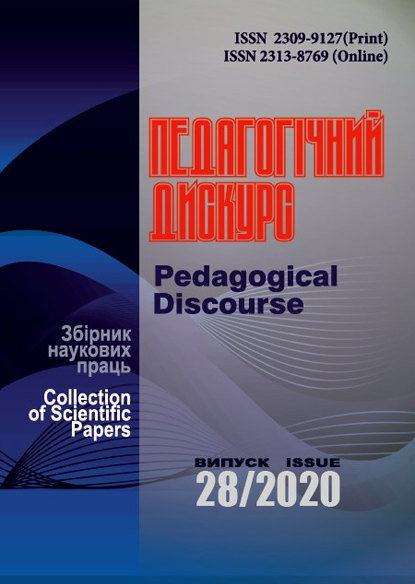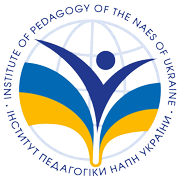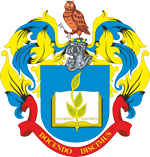Distance English as a Second Language Teaching in Synchronous-Asynchronous Learning Environment
Abstract
The paper covers the problem of distance learning of English as a Second Language (ESL) in higher agro-technical educational institutions in Ukraine. Integration of distance ESL learning into the educational process in higher agro-technical educational institutions has been considered from the perspective of its current inevitability due to the COVID-19 quarantine. The most effective ways of implementing online learning of ESL into the curricula have been discussed. Synchronous and asynchronous learning have been considered. Having analyzed the forms of online teaching as well as the requirements for their implementation, teaching the approved course materials online in multiple environment (combined synchronous and asynchronous learning) has been defined to be the most effective one. The authors’ experiences in designing and teaching synchronous and asynchronous distance learning ESL classes for non-linguistic specialties in higher agro-technical educational institutions provide an insight into the characteristics, benefits, and limitations of these two modes of distance learning. Effective synchronous distance learning classes can be modeled according to the teaching style and course materials used in traditional classes through use of the Internet. Asynchronous distance learning classes require quite a different model built around provided course materials and short «lectures» delivered via streaming audio and graphics. However, lecturing cannot provide effective interaction, which is vital in ESL learning. Thus, the approach must be significantly redefined and multiple environment should be created for delivering effective distance learning ESL classes.
Downloads
References
Polat, E. I. (Eds). (2004). Teoriya і praktika distanсionnogo obucheniya [Theory and Practice of Distance Education]. Moscow: Akademiya [in Russian].
Polat, E. I. (Eds). (2006). Pedagogicheskie tehnologii distantcionnogo obucheniya [Pedagogical Technologies of Distance Education]. Moscow: Akademiya [in Russian].
Berg G., & Simonson M. (2016). Distance learning. Encyclopedia Britannica. Retrieved from https://www.britannica.com/topic/distance-learning [in English].
Bernard, R. M., Abrami, P. C., Lou, Y., Borokhovski, E., Wade, A., Wozney, L., Wallet, P., Fiset, M., & Huang, B. (2004). How does Distance Education Compare with Classroom Instruction? A Meta-Analysis of the Empirical Literature. Review of educational research, 74 (3) [in English].
Haythornthwaite, C., & Kazmer, M. (2008). Bringing the Internet Home: Adult Distance Learners and Their Internet, Home, and Work Worlds. Retrieved from https://onlinelibrary.wiley.com/doi/10.1002/9780470774298.ch15 [in English].
Hrastinski, S. (2008). Asynchronous and Synchronous e-Learning. Educause Quarterly, 31 (4). Retrieved from https://net.educause.edu/ir/library/pdf/eqm0848.pdf [in English].
Lotfi, A. & Hosseini, P., & Sayed, M. (2019). The Effect of Synchronous and Asynchronous Language Learning: A Study of Iranian EFL Intermediate Students’ Vocabulary Learning. Theory and Practice in Language Studies, 9. 1585–1594. Retrieved from https://www.academypublication.com/ojs/index.php/tpls/article/view/tpls091215851594 [in English].
Robert, L. & Dennis, A. (2005). Paradox of Richness: A Cognitive Model of Media Choice. IEEE Transactions on Professional Communication, 48 (1), 10–21. Retrieved from https://ieeexplore.ieee.org/abstract/document/1397904/ [in English].
Warren, A. (2020). Same, Same Or Different – Teaching Your Coursebook Online. Part 1. Retrieved from https://webinars.eltngl.com/teaching-coursebook-online [in English].
Copyright (c) 2020 Pedagogical Discourse

This work is licensed under a Creative Commons Attribution-NonCommercial-ShareAlike 4.0 International License.

















